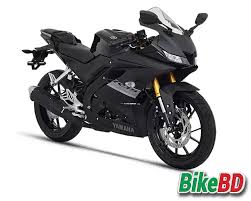Bike are more than just a mode of transportation; they offer a fun and eco-friendly way to explore your surroundings, improve your fitness, and enjoy the outdoors. Whether you’re a seasoned cyclist or a casual rider, understanding the different types of bikes, their benefits, and how to choose the right one can enhance your biking experience.
Types of Bikes
- Road Bikes: Designed for speed and efficiency on paved roads, road bikes feature lightweight frames and thin tires. They are ideal for long-distance riding and racing.
- Mountain Bikes: Built to handle rugged terrains, mountain bikes come with wider tires, sturdy frames, and advanced suspension systems. They are perfect for off-road adventures and trail riding.
- Hybrid Bikes: Combining features of road and mountain bikes, hybrids are versatile and comfortable for both paved and unpaved paths. They are a great option for commuters and recreational riders.
- Cruiser Bikes: Known for their relaxed riding position, cruiser bikes are perfect for leisurely rides on flat terrain. They often come with wide tires and comfortable seats, making them ideal for beach towns and urban cruising.
- Electric Bikes (e-bikes): E-bikes come equipped with a battery and motor, providing pedal-assist technology. They make cycling easier, especially for commuting or tackling hills.
- Folding Bikes: These compact bikes are designed for easy storage and transport. They are great for urban dwellers or those with limited storage space.
Benefits of Riding a Bike
- Physical Health: Cycling is an excellent form of cardiovascular exercise, helping to improve heart health, build muscle, and increase stamina. It can also aid in weight management.
- Mental Well-Being: Riding a bike can boost your mood, reduce stress, and improve mental clarity. The combination of physical activity and being outdoors contributes to overall mental health.
- Environmental Impact: Biking is an eco-friendly transportation option that reduces carbon emissions. By choosing to ride instead of driving, you contribute to a cleaner environment.
- Cost-Effective: Biking can save you money on fuel, parking, and public transportation. Additionally, maintenance costs for bikes are generally lower than for cars.
- Convenience: Bikes can often navigate through traffic more easily than cars, making them a convenient option for commuting in busy urban areas.
Tips for Choosing the Right Bike
- Assess Your Needs: Consider how you plan to use the bike. Will you be commuting, exercising, or enjoying leisurely rides? Your intended use will help determine the type of bike you need.
- Test Ride: Always test ride a bike before purchasing. This will help you assess comfort, fit, and handling.
- Consider Frame Size: A properly sized frame is crucial for comfort and efficiency. Check the manufacturer’s sizing guide to find the right fit for your height and inseam.
- Research Components: Pay attention to the bike’s components, such as the gears, brakes, and tires. Higher-quality components may enhance performance and durability.
- Set a Budget: Determine your budget before shopping. Bikes can range from affordable models to high-end options, so setting a budget can help narrow your choices.
Conclusion
Bike offer a fantastic way to stay active, explore your surroundings, and contribute to a healthier planet. With various types to choose from and numerous benefits, there’s a bike for everyone. By considering your specific needs and preferences, you can find the perfect bike to enhance your riding experience.


